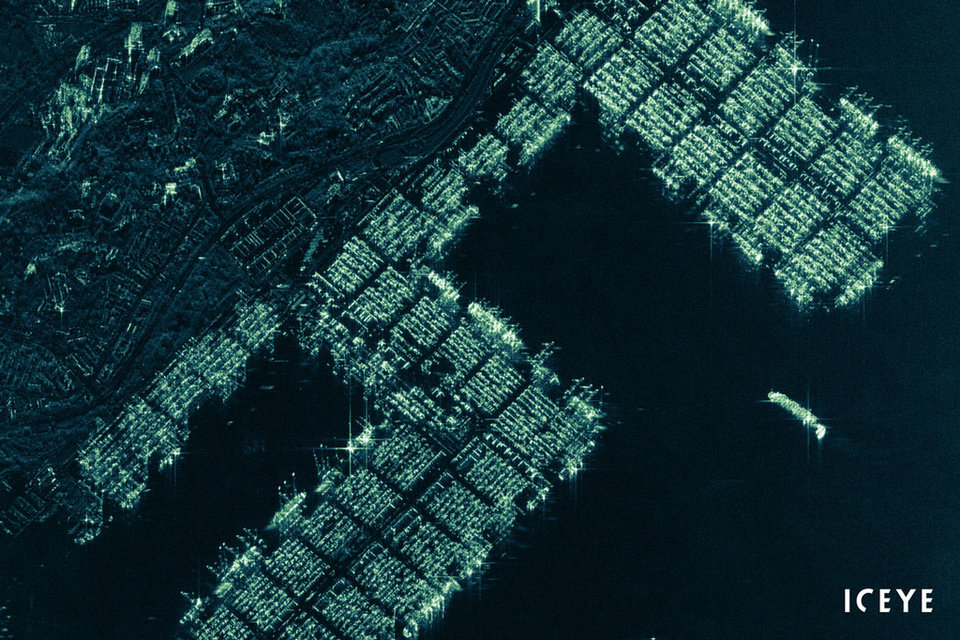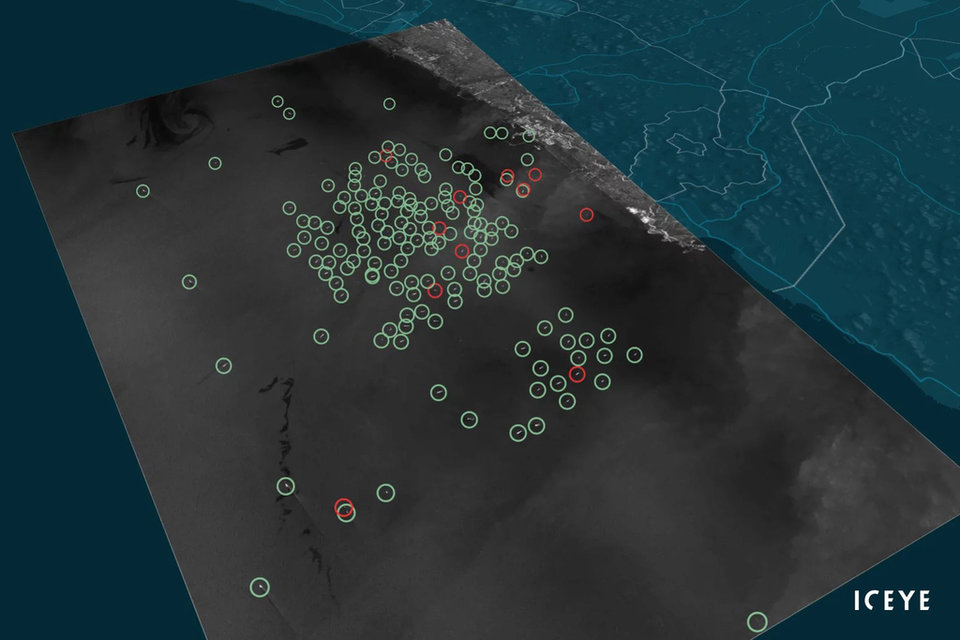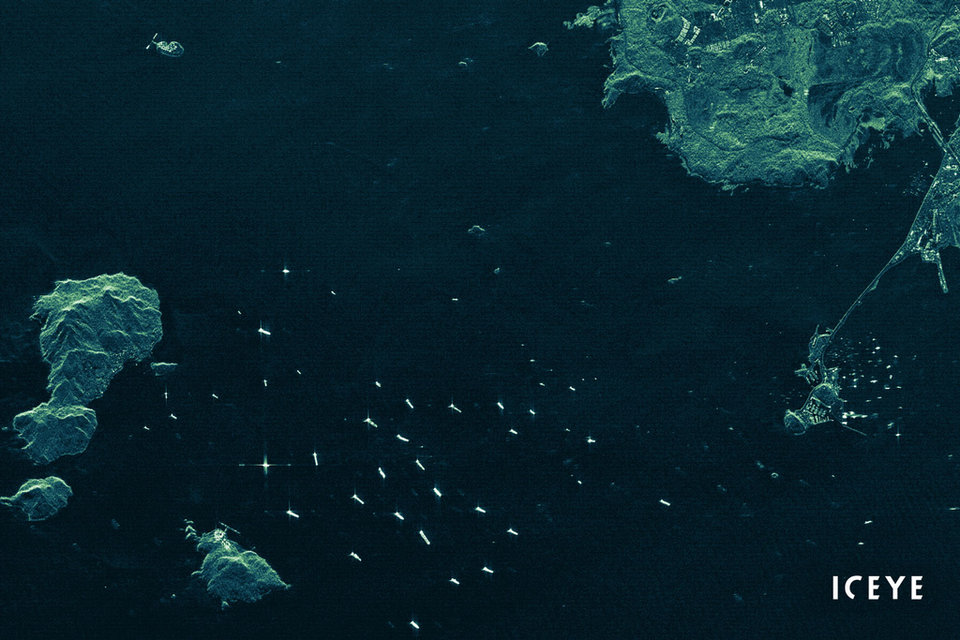Technology
We can see you:
introducing Dark Vessel Detection
Finnish start-up ICEYE recently launched Dark Vessel Detection, a new global solution which promises to help governments spot ships engaging in illegal activities in their waters. Ross Davies looks at how the technology could help coastal states better protect both their economies and human life.
Image:
From illicit
transhipments of goods and illegal fishing to drug and human trafficking, governments around the world have their hands full when it comes to ensuring the maritime safety of their regions.
According to the United Nations Office on Drugs and Crime, crimes on the high seas are becoming increasingly sophisticated, endangering lives and undermining regional safety and economic growth.
Addressing a conference last year, UNODC executive director Yury Fedotov cited cocaine trafficking in the Atlantic, migrant smuggling in the Mediterranean and piracy in the Gulf of Guinea as particular scourges.
“These crimes pose an immediate danger to people’s lives and safety, they undermine human rights, hinder sustainable development, and as this Council has recognised, they threaten international peace and security,” said Fedotov.
Flouting IMO regulations, criminal vessels often operate with their automatic identification system (AIS) – and any other systems through which they can be identified– switched off, thus allowing them to evade detection.
To combat the problem, government agencies and coastguards are in desperate need of real-time, objective information on suspect vessels discovered in their waters, argues microsatellite manufacturer ICEYE.
All day and all night: dark vessels in the crosshairs
In January, the Finnish start-up launched Dark Vessel Detection, a new global solution that aims to provide a “standardised data product” for coastal states and facilitate improved round-the-clock monitoring of their exclusive economic zones.
According to ICEYE, Dark Vessel Detection can circumvent the problem of offline AIS transponders by using the group’s own synthetic-aperture radar (SAR). When combined, AIS and ICEYE SAR can provide near real-time, high-res images of suspect vessels longer than 10m - and, potentially semi-submersible vessels – even in cloudy weather conditions.
Data users can improve their enforcement activities against illegal transhipments of goods
“Dark Vessel Detection offered by ICEYE is built for governments around the world for improving the maritime safety of their regions,” said ICEYE vice-president of business development and sales Steve Young. “This unique solution enables authorities to take action based on reliable information. Data users can improve their enforcement activities against illegal transhipments of goods, help them in addressing illegal fishing, and assist in curbing drug and human trafficking.”

A radar satellite image from the PasirPanjang container terminal of Singapore showing the container ports, several anchored cargo vessels, and a vessel manoeuvring alongside the port. Image: ICEYE
Case studies: illegal fishing in the Pacific and transhipments in the Gulf of Oman
An interactive demo on ICEYE’s website shows how Dark Vessel Detection might be deployed to help in different parts of the world, such as the Pacific Ocean, where illegal, unreported and unregulated (IUU) fishing is said to cost local coastal nations more than $600m per year, according to The Pacific Islands Forum Fisheries Agency.
One case study shows a collaborative fishing vessel operating under a Chinese flag, detected through radar satellite data, but invisible to AIS receivers. Dark Vessel Detection can get around this and provide data ready for analysis, such as the name of the vessel, its type, dimensions, heading, speed, and course.
Dark Vessel Detection can provide the name of the vessel, its type, dimensions, heading, speed, and course
Another case study looks at the Gulf of Oman. The waterway made headlines in June last year after two oil tankers passing close to the Strait of Hormuz – a key oil chokepoint – were attacked, stoking tensions between the US and Iran and causing oil prices to jump by as much as 3% in the immediate aftermath.
The demo shows a dark vessel moored near the UAE Port of Fujairah – another site of conflict last year, in which four commercial vessels were damaged in May, following what was described as “sabotage attacks” by UAE authorities.
The vessel in question in the demo is classified as a tanker, but high-res images from ICEYE’s SAR satellites clearly show two tankers in a ship-to-ship transfer formation – often an indicator of illegal transhipments, such as the unreported transfer of petroleum from one vessel to another – as well as a supportive tug boat to the side of one of the vessels.

A visualisation shows locations, and the AIS status of collaborative vessels with a green circle, and dark vessels with a red circle, on top of synthetic-aperture radar (SAR) satellite data. Image: ICEYE

A radar satellite image of Port of Panama City shows several vessels sailing in the Gulf of Panama. Image: ICEYE
“An invaluable solution”: could Dark Vessel Detection make international waters safer?
It bears repeating: criminal activity on the high seas can carry dire implications for national – and, in some cases, private – economies, not to mention human lives. In cases like those seen in the Gulf of Oman last year, it can even threaten international peace and security.
Criminal activity on the high seas can carry dire implications for national economies
It bears repeating: criminal activity on the high seas can carry dire implications for national – and, in some cases, private – economies, not to mention human lives. In cases like those seen in the Gulf of Oman last year, it can even threaten international peace and security.
Large bodies of water, in which borders and territories are inconspicuous, have long provided perpetrators with a sense of impunity and the confidence to go about their crimes quite literally under the radar.
If ICEYE’s Dark Vessel Detection can help shed light on such misdemeanours, it could prove to be an invaluable asset for coastal governments.